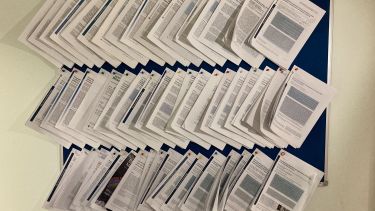In case you missed them, our team has already published three papers this year:
- Improved net carbon budgets in the US Midwest through direct measured impacts of enhanced weathering (Kantola et al, 2023)
Here, we examined the effect of EW on biomass production, the carbon budgets, and rates of inorganic CO2 removal of a maize/soybean rotation and miscanthus cropping systems under field conditions, on agricultural soils in the Midwestern United States. The calculations showed that enhanced weathering reduced net carbon loss to the atmosphere by 42% in maize plots. Paired with conservation tillage or cover crops, the basalt application could turn maize into a net carbon sink. In miscanthus plots, which already stored more CO2 than they emitted before the addition of basalt, enhanced weathering more than doubled carbon storage. - Towards sustainable food production and climate change mitigation: an attributional life cycle assessment comparing industrial and basalt rock dust fertilisers (Oppon et al, 2023)
Food production is set to double by 2050 to feed the increasing world population. This poses a global challenge to minimise environmental impacts from intensified production and use of chemical fertilisers. The study investigates whether basalt rock dust fertiliser can be an environmentally sustainable close substitute to expensive conventional rock-derived P and K fertilisers. Results suggest that transitioning to milled basalt as a natural geo-fertiliser to support food production may help address several UN Sustainable Development Goals such as ‘Responsible consumption and production’ and ‘Climate Action and Zero Hunger’. - Policy Briefing: Potential of enhanced rock weathering deployed with UK agriculture to sequester atmospheric carbon dioxide (Beerling et al, 2023)
Designed for policymakers and other key stakeholders, our policy briefing provides a round up and analysis of our key findings on Enhanced Rock Weathering in the UK.
See all of our publications here.
Don't forget, too, you can sign up for our annual LC3M newsletter here, and in case you missed the last one, read our most recent newsletter here.

